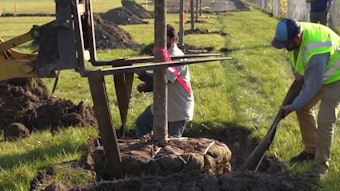Our last article discussed the types of loans and which make the most sense. This article on equipment and leasing builds on the loan information and covers types of leases.
Why Lease instead of Buy?
I will tackle the buying option from two perspectives: cash or financing. Starting with the cash option buying equipment makes sense. It meets one of the two criteria for using cash, it creates revenue.
The challenge is whether a cash purchase leaves you with working capital or cash on hand. Most equipment is too expensive to purchase if you need several pieces of equipment; for most small businesses using cash to purchase equipment outright is not an option. Additionally, if the equipment suffers extreme use, its life cycle is short requiring replacement and a further burden on cash.
Let’s investigate the financing option. Financing gives you the ability to leverage the business's sales and cash flow. Unlike consumer borrowing, a topic we have hit on several times in this series, your concern with a commercial loan is not making the payments, it is about the multiple from the purchase. If you buy a machine or work-related equipment for $50,000, how much revenue will it create over its life cycle? Most executives are looking for a minimum of 3X and 5X or higher as the sweet spot. That means a piece of equipment costing $50,000 over a 3-year life cycle before replacement must deliver at least $150,000 to be considered a smart purchase.
The other advantages for purchasing equipment is it provides a tax deduction and the ability to depreciate it over time. This route can reduce the total purchase price up to 25 percent. The last issue with financing is your commercial credit score and current debt load. If you are not incorporated (LLC, LLP, or Chapter C) getting a commercial loan is more difficult.
Finance or Lease?
Much like we covered in the last section, financing an equipment loan is subjected to the credit rating of the business or the owner. Although this is a critical issue, it is less of an obstacle to securing an equipment lease.
Equipment leases usually require no down payment or collateral. That means you can maintain a healthy pool of cash to fund day-to-day operations. You don’t own the equipment; it is bought by a lender who rents it for a monthly payment. The additional advantage is you can turn the equipment back to the leasing company and replace with new equipment.
Here are your options for equipment lease:
- Operating lease has lower monthly payments and gives the business owner the option to own the equipment at the end of the lease term by paying fair market value.
- Capital lease has higher monthly payments and structured more like a traditional loan. Unlike the operating lease it doesn’t appear on your balance sheet. When the lease period is completed, there is a buy back component at a nominal price like 10 percent of the purchase price.
- Manufacturer lease is exactly that, leasing directly from the manufacturer. Since they are in business to build and sell inventory, many manufacturers move product by offering great leasing terms. There are great deals available when the manufacturer is introducing a new model and want to push it through their sales channels. That means they need the old stuff out of the way. If you can live with the older model, these are some of the best terms available.
Next Article: Payment Systems
Editor’s note: The is the seventh article in a 10-part series that focuses on financing for landscaping business owners of all sizes. Part 6 covered the process of obtaining loans, credit or alternative financing. This article reviews the process of equipment and leasing.






























